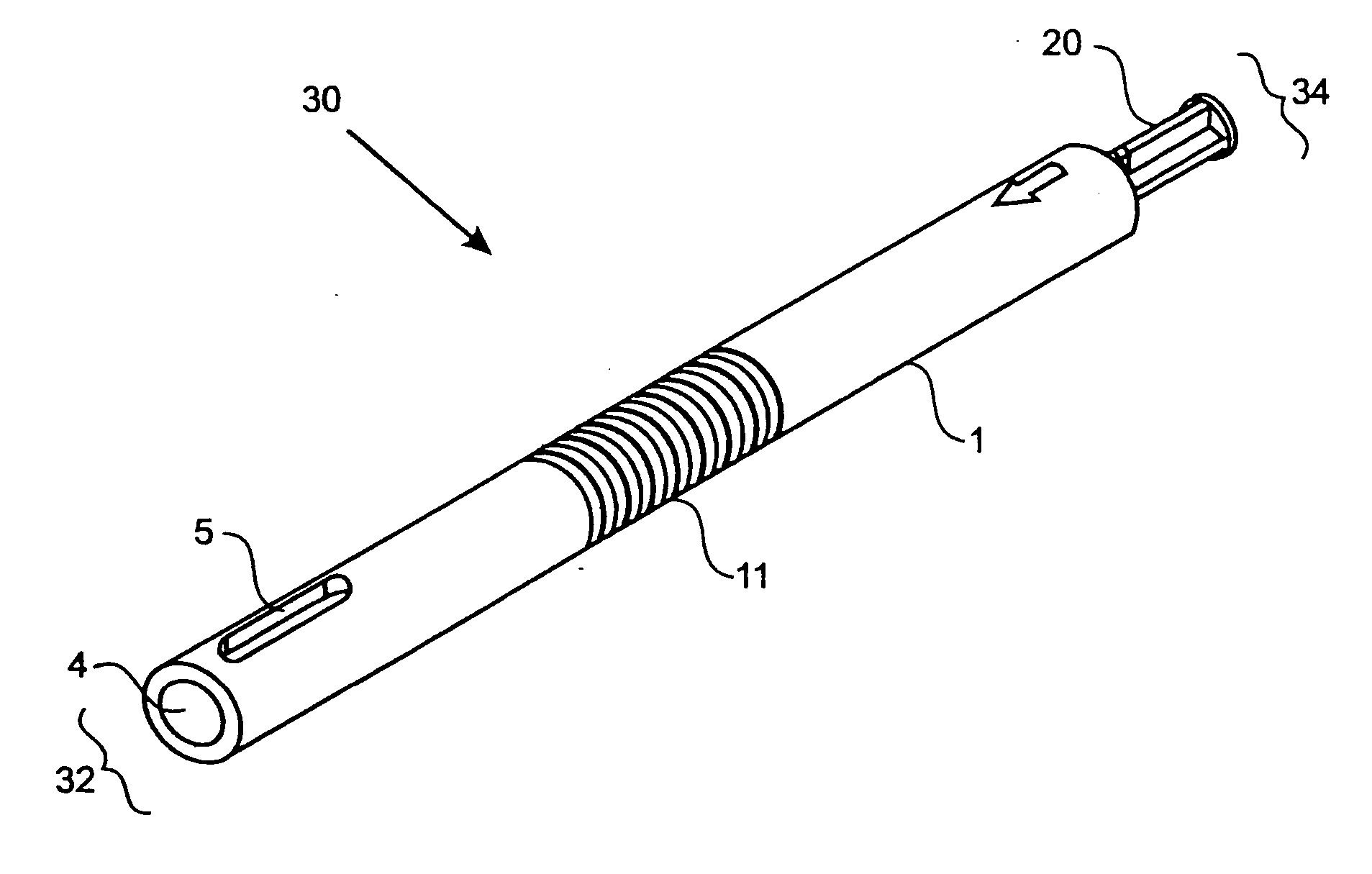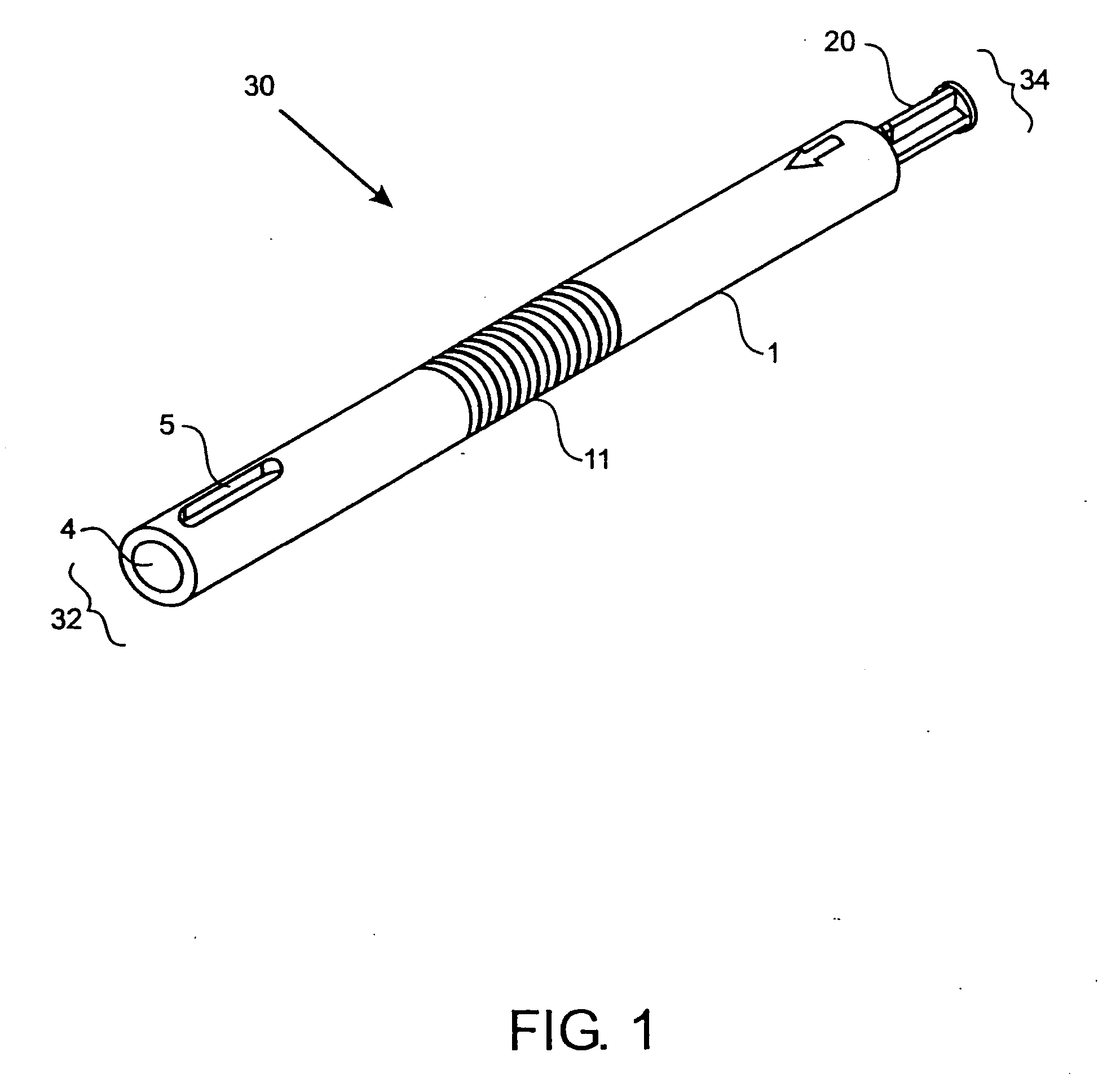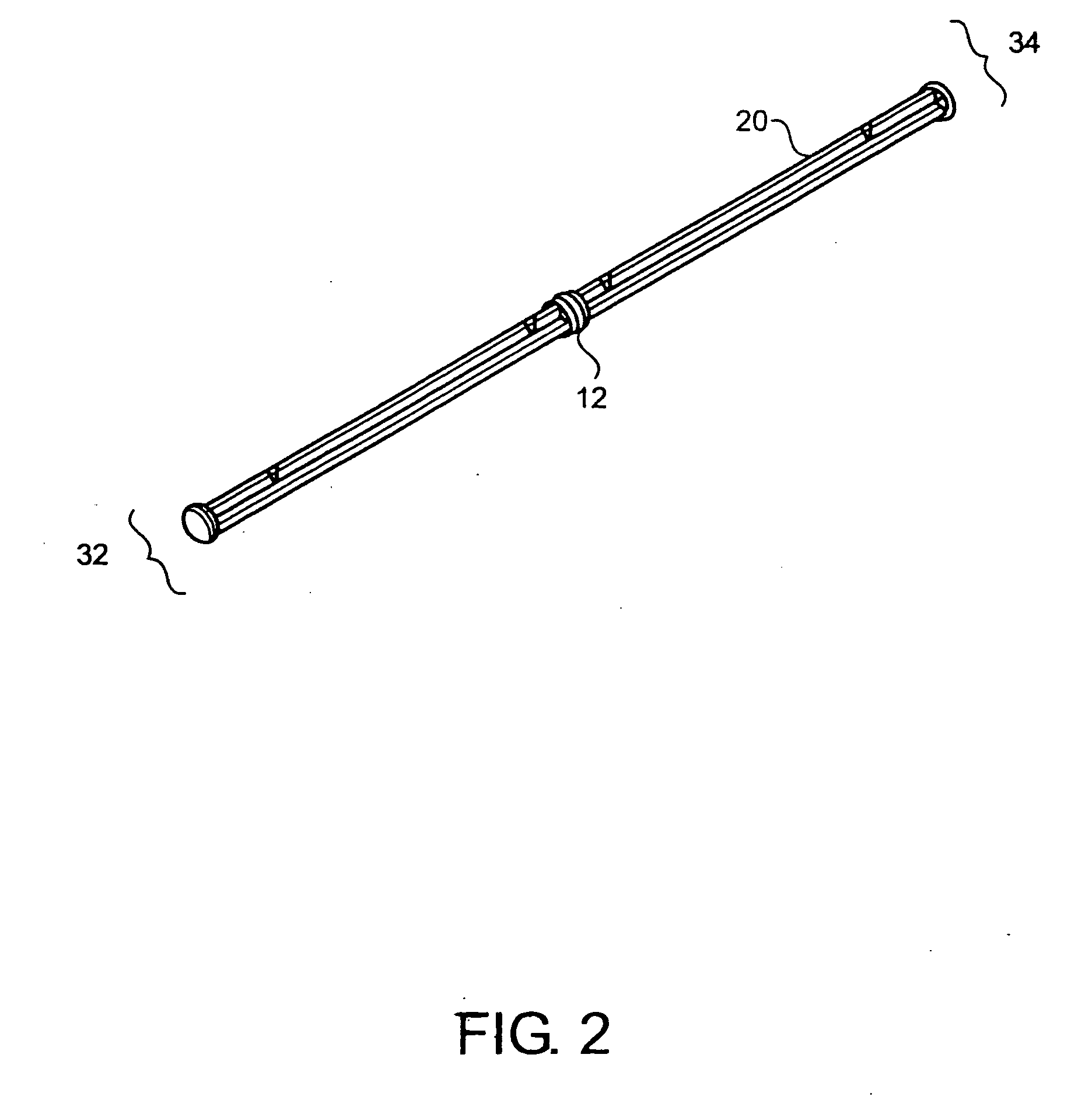Bone and cartilage implant delivery device
a delivery device technology, applied in the field of bone and cartilage implant delivery devices, can solve the problems of deficient determining the exact depth of a defect, deformation of variable depth, and difficulty in presenting defects, so as to facilitate insertion and pass through soft tissue. , the effect of easy insertion
- Summary
- Abstract
- Description
- Claims
- Application Information
AI Technical Summary
Benefits of technology
Problems solved by technology
Method used
Image
Examples
Embodiment Construction
[0062]FIG. 1 shows one embodiment of the implant delivery device 30 of the present invention having a proximal end 34 and a distal end 32. In a preferred embodiment, the delivery device 30 has a length suitable for arthroscopic use, i.e., approximately 4 to 10 inches long, preferably 5-8 inches, with a diameter of about 0.25-1 inch, preferably 0.4-0.75 inches. The implant delivery device 30 includes a hollow tubular outer shaft 1 (also shown in FIG. 3) having an internal bore 4 along the longitudinal axis. The internal bore 4 extends the entire length of the outer shaft 1 from the distal end 32 to the proximal end 34. FIGS. 9A-9C and FIGS. 11A-11C also illustrate the internal bore 4. The distal end 32 of the outer shaft 1 can have one or more slots 5 through the outer shaft 1 for visualizing the implant (not shown in FIG. 1) when the implant is in the delivery device 30. Slots 5 can be any shape that allows the implant to be visualized while disposed in the delivery device 30 and ca...
PUM
 Login to View More
Login to View More Abstract
Description
Claims
Application Information
 Login to View More
Login to View More - R&D
- Intellectual Property
- Life Sciences
- Materials
- Tech Scout
- Unparalleled Data Quality
- Higher Quality Content
- 60% Fewer Hallucinations
Browse by: Latest US Patents, China's latest patents, Technical Efficacy Thesaurus, Application Domain, Technology Topic, Popular Technical Reports.
© 2025 PatSnap. All rights reserved.Legal|Privacy policy|Modern Slavery Act Transparency Statement|Sitemap|About US| Contact US: help@patsnap.com



